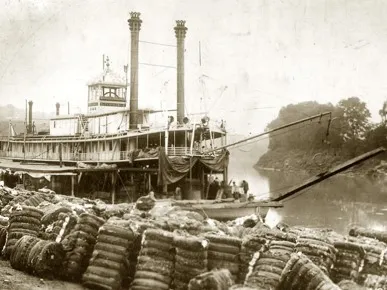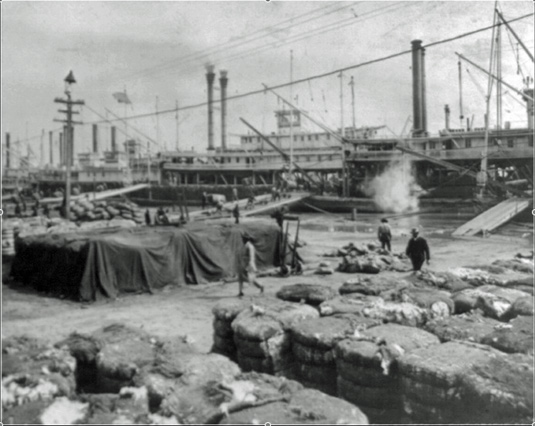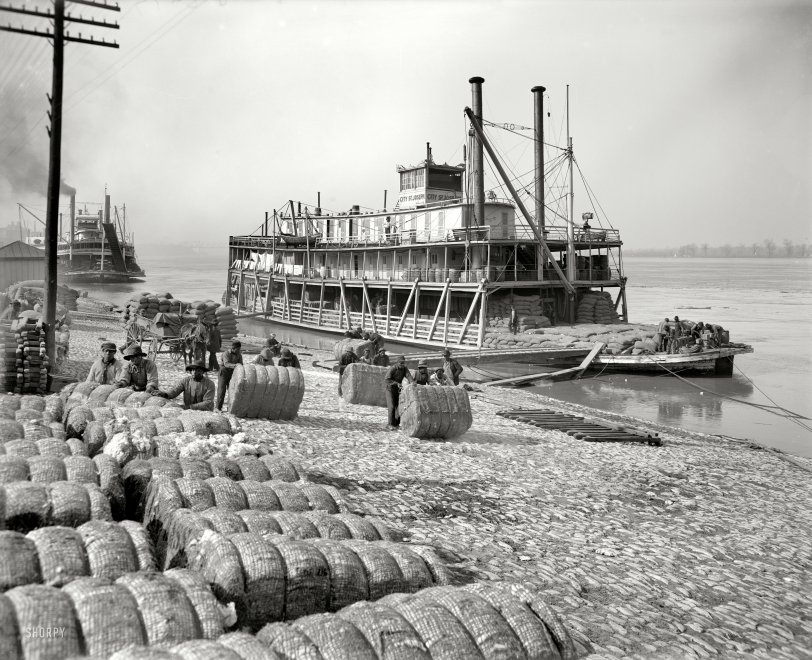In the middle of the American Civil War, a Confederate warship pulled off one of the most daring and creative acts of naval warfare ever recorded. The CSS Alabama, a fast and deadly commerce raider, didn’t just rely on cannons and sails it used something far more unexpected: cotton bales.
Yes, cotton. The same soft fiber that was at the heart of the Southern economy and the global textile trade became a makeshift defense system in the brutal world of maritime combat. In 1863, the CSS Alabama used compressed cotton as improvised armor during battles, soaking up enemy fire and doubling as valuable cargo. It was an innovation born out of necessity, and it gave the Confederate Navy a surprising edge at sea.

The Rise of the CSS Alabama
Launched in 1862 from a British shipyard, the CSS Alabama was built to strike fear into the hearts of Union merchant ships. Commissioned by the Confederacy but secretly constructed overseas to evade international neutrality laws, the Alabama was sleek, swift, and built for disruption. Under the command of Captain Raphael Semmes, the ship crisscrossed the Atlantic, Caribbean, and even Indian Oceans, capturing or sinking over 60 Union vessels in just two years.
But as effective as the Alabama was, it was always at a disadvantage. The Confederate Navy was vastly outgunned by the Union, with fewer ships and limited resources. The Alabama had to stay nimble and smart—and that meant using whatever tools were available.

Cotton: The South’s Secret Weapon
In the South, cotton was everything. Dubbed “King Cotton,” it was the cornerstone of the Confederate economy and the main bargaining chip for foreign aid. So when it came time to outfit ships like the Alabama, cotton was already on board but not just for trade.
During sea battles, the Alabama’s crew stacked densely packed bales of cotton along the sides of the ship to act as temporary armor. These bales absorbed musket balls and even some cannon fire, providing a crude but effective shield in firefights. Unlike traditional iron plating which the Confederacy couldn’t easily produce or transport cotton was lightweight, flexible, and readily available.
Video:
CSS Alabama – Sweet Home Forever At Sea
This impromptu armor wasn’t perfect, but it helped. In tight exchanges where speed and maneuverability mattered more than brute strength, it gave the Alabama a fighting chance. Plus, if the ship wasn’t under attack, those same bales could be used as valuable cargo for trade or barter, especially when calling at sympathetic ports like Havana or Cape Town.
Innovation on the High Seas
The use of cotton as armor highlighted a bigger truth about Civil War-era warfare: innovation often came from desperation. The Confederacy was constantly forced to find creative solutions to offset the North’s industrial superiority. Whether it was turning river steamers into ironclads or arming privateers, Southern forces leaned heavily on improvisation.
In the Alabama’s case, the cotton trick wasn’t just clever it worked. It helped the ship maintain its reign as one of the most successful commerce raiders in maritime history, and it allowed the Confederate Navy to keep up the fight at sea far longer than many expected.

The Final Battle and Legacy
Eventually, the Alabama met her end. In June 1864, she was cornered and sunk by the USS Kearsarge off the coast of Cherbourg, France. But even in defeat, the legend of the Alabama lived on. Her raids had stretched Union naval resources thin, and her cunning use of cotton bales became a lasting symbol of Confederate ingenuity.
Video:
CSS Alabama – Confederate Raider
Today, the story of the CSS Alabama is remembered not just for its impressive hit count, but for how it rewrote the rules of engagement at sea. Using agricultural goods as armor? That wasn’t in any naval manual. And yet, it worked at least for a while.
Conclusion: When Cotton Fought Cannonballs
The tale of the CSS Alabama and its cotton armor isn’t just about war it’s about adaptability. It’s a testament to how people, faced with overwhelming odds, can find unconventional ways to survive and even thrive.
In a war defined by iron, steam, and industrial might, a few bales of cotton turned out to be more than just trade goods. They were protection. They were strategy. They were hope. And they remain a fascinating footnote in the annals of maritime warfare.



